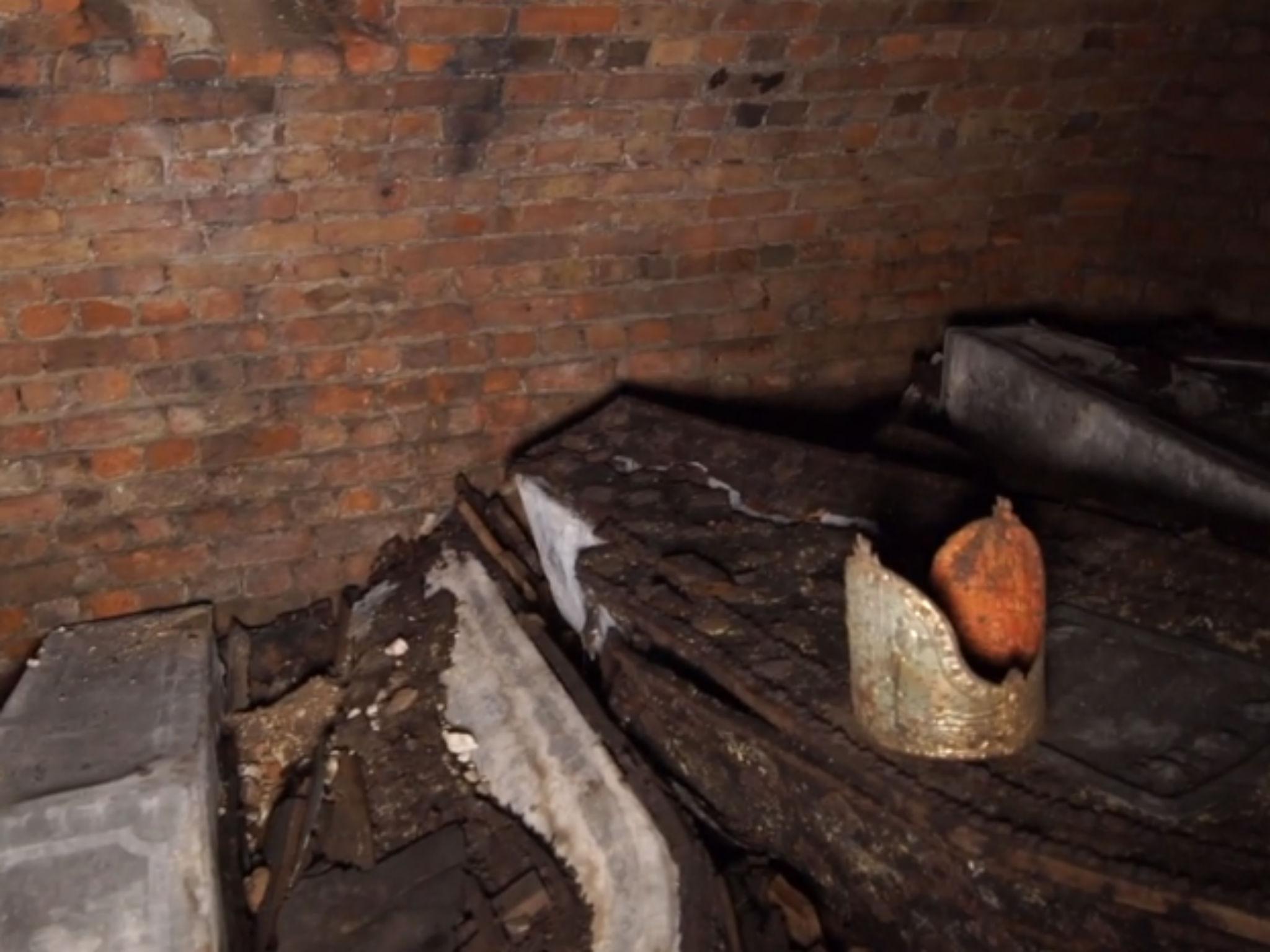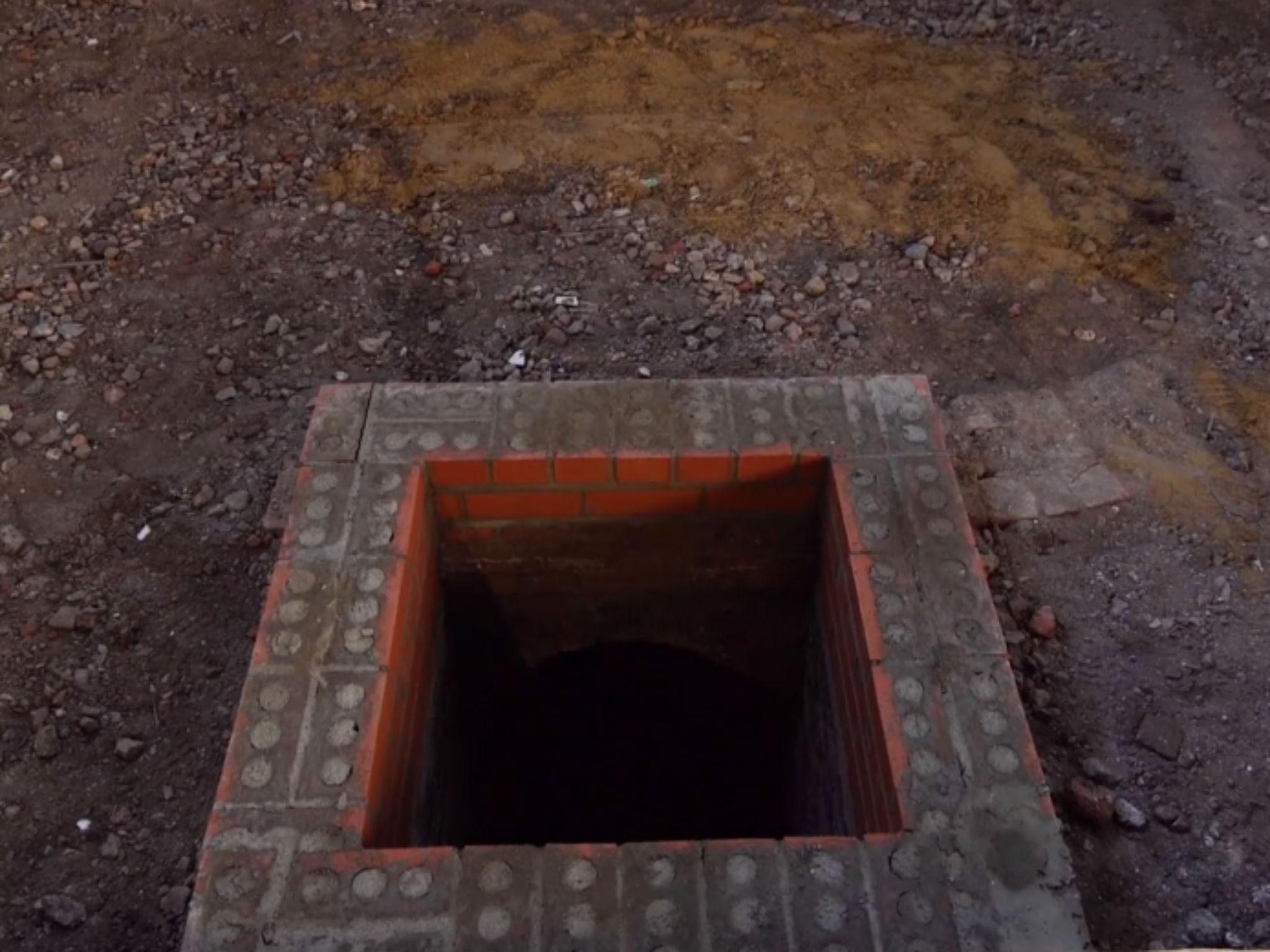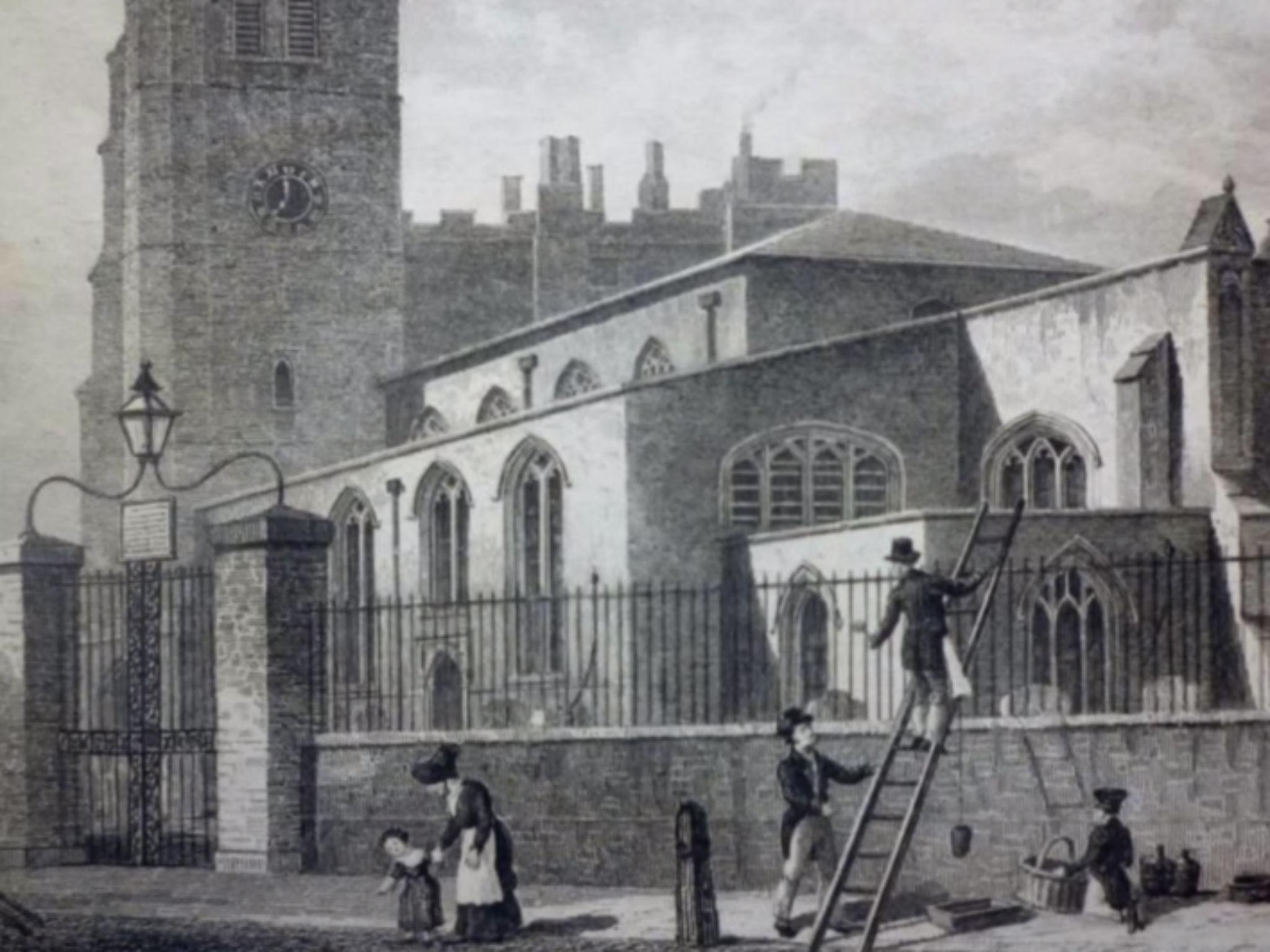Secret remains of five Archbishops discovered by builders underneath medieval London church
Pile of lead coffins included Richard Bancroft, who commissioned the King James Bible

Builders have discovered the remains of several Archbishops of Canterbury dating from the 17th century below a mediaeval parish church in London.
Workers were lifting concrete slabs from the floor at the deconsecrated church of St Mary-at-Lambeth, next to the Archbishop of Canterbury’s official London residence, when they found a small entry-way into a tomb.
After mounting a phone onto a stick and lowering it through the hole, they saw a red and gold mitre on top of a pile of at least 20 lead coffins.
The parish church of St Mary-at-Lambeth was built opposite Westminster in the 11th century by the sister of Edward the Confessor, and it was the chosen burial place for various Archbishops of Canterbury from the 1660s.
The coffins contain the remains of Richard Bancroft, who oversaw the production of the King James Bible in 1611, as well as clergyman John Moore and his wife, Catherine Moore.
According to the church’s records, another three Archbishops are probably buried there: Frederick Cornwallis, who was in office from 1768 to 1783, Matthew Hutton (1757 to 1758) and Thomas Tenison (1695 to 1715).
A sixth Archbishop, Thomas Secker (1758 to 1768), had his internal organs buried in a canister in the churchyard.

Coffin nameplates showed that the Dean of Arches John Bettesworth, the judge who sits at the ecclesiastical court of the Archbishop of Canterbury, was also buried there in 1751.
The Garden Museum director, Christopher Woodward, said: “We still don't know who else is down there.”
He explained that the crypt had been a highly unlikely discovery. The church was located next to the Thames and could be flooded, and the Victorians had already cleared out thousands of coffins when they remodelled the building in the 19th century.
“Every archaeologist in London has looked in this building, but nobody told us to expect us to find anything,” he said.

The discovery might not have happened at all as the church was deconsecrated in 1972 and scheduled for demolition.
Thanks to a group of volunteers and garden historians, the church escaped its fate and the volunteers decided to dedicate the building to John Tradescant, the gardener to King Charles I who was buried in the church.
Mary-at-Lambeth closed in October 2015 to undergo a £7.5m redevelopment and become the world’s first gardening museum.
Wesley Kerr, chair of the Heritage Lottery Fund London between 2007 and 2014, said: “To know possibly that the person who commissioned the King James Bible is buried here is the most incredible discovery and greatly adds to the texture of this project.”
The new building will contain a courtyard for education, five galleries and a garden when it opens again to the public.
Join our commenting forum
Join thought-provoking conversations, follow other Independent readers and see their replies
Comments
Bookmark popover
Removed from bookmarks